
Moldavite Gemstone: Properties, Meanings, Value & More
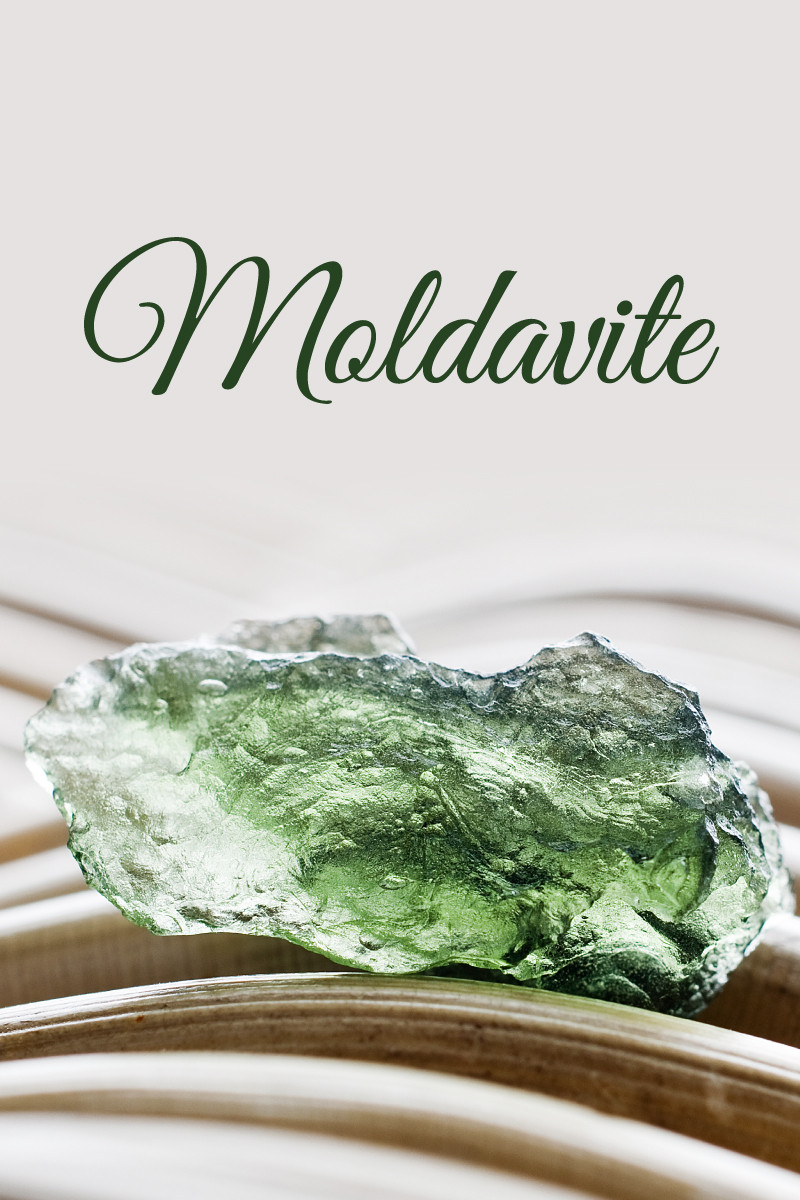 Moldavite is a rare, green silica glass with a unique formation involving Earth and space. Like a gemstone astronaut, moldavite gemstones started on Earth, blasted into space, and then fell back to Earth!
Moldavite is a rare, green silica glass with a unique formation involving Earth and space. Like a gemstone astronaut, moldavite gemstones started on Earth, blasted into space, and then fell back to Earth!
Moldavite has a reputation for being a powerful healing crystal and a beautiful accessory or decor item. But, is moldavite a gemstone?
Yes, moldavite is considered a gemstone. While gemstones are generally thought of as crystals and moldavite isn’t a crystal, it’s used like other crystal gems.
In fact, moldavite is one of the rarest gemstones on Earth! So, why is moldavite rare? It all comes down to its unique origins and exclusive sources, which we’ll cover today!
Is moldavite worth buying? By the end of this article, you’ll have all the moldavite properties, uses, and powers you need to know to decide for yourself!

About Moldavite Stone
Moldavite is a truly special gemstone in shades of olive-green, forest green, yellow-green, and brownish-green. Is moldavite a precious stone? No, moldavite is a semi-precious gemstone, but its rarity makes it a precious commodity!
In fact, the annual production of diamonds is around 30 tons, while there are only 300 tons of moldavite total! That means moldavites are rarer than diamonds, a precious gemstone.
Another name for moldavite is “Bouteille Stone.” Bouteille is French for “bottle,” after the stone’s bottle-green coloring.
Moldavite isn’t a monthly birthstone, but it is a zodiac stone for Sagittarius! With moldavite, Sagittarius folks can embrace their expansive, curious nature!
Mineral Characteristics
Moldavite is composed of silica and various oxides, usually aluminum oxide. While rare, the stone is the most common gem-quality tektite mineral. The tektite family is a small group of natural glasses formed from materials shot outwards by a meteorite impact.
In terms of color, you’ll see gem-quality moldavite in dark green, olive-green, turquoise, or sea glass-green. Brownish-green coloring is usually seen on materials unsuitable for gems.
On the Mohs mineral hardness scale, moldavite ranks between 5-7, which is an average ranking for durability. Raw moldavite's surface has distinctive pits and wrinkles similar to a meteorite.
Besides its surface, how can you tell if moldavite is real? Let’s go over how to identify and distinguish moldavite stones.
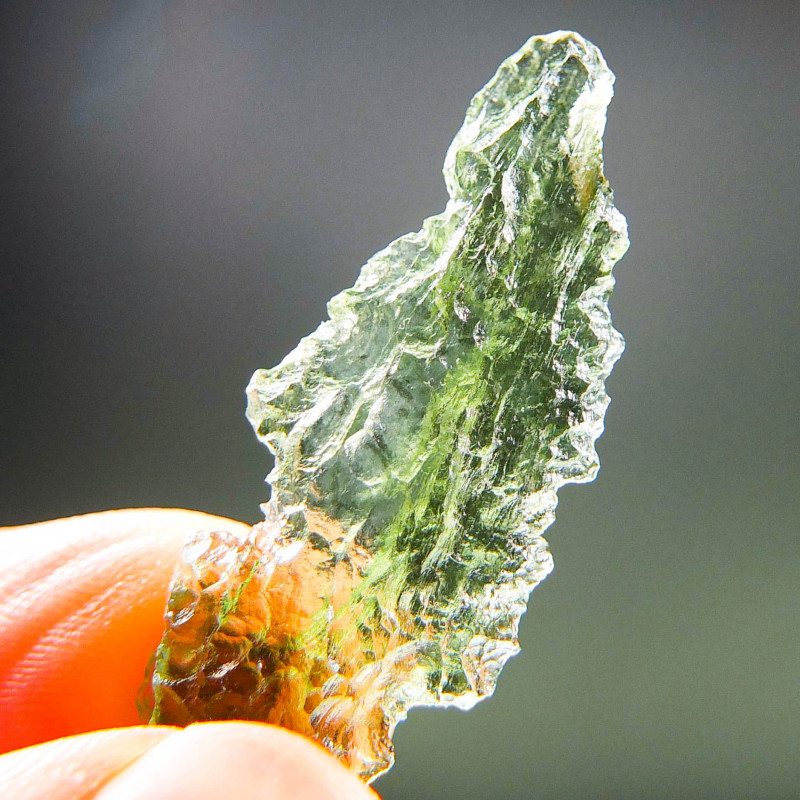
Moldavite Identification: Fake vs. Real Moldavite
Visually, you can identify moldavite’s inclusions and wavy, steam-like surface. The best indicator is the presence of lechatelierite and gas bubbles.
However, moldavites can vary. Examining the stone’s inclusions and X-ray fluorescence is a safer bet, though you may need the proper gemological equipment.
Fake moldavite is usually man-made green glass. These imitations are transparent and inclusion-free — too “perfect” to be moldavite.
If you see an “African moldavite,” it’s not moldavite. It’s probably Libyan desert glass or Ivory Coast tektite.
Find the rest of moldavite’s properties below!
Moldavite Specifications & Characteristics
Color: Olive green, yellow-green, forest green, or brownish-green
Crystal structure: None (amorphous)
Luster: Vitreous (glass-like)
Transparency: Transparent to opaque
Refractive index: 1.48-1.54
Density: 2.32-2.38
Cleavage: None
Fracture: Conchoidal
Streak: White
Luminescence: Present; Yellow-green in X-rays
With the mineral side done, it’s time to explore moldavite’s metaphysical side!

Moldavite Meaning
You may see two names for this gem: moldavite and vltavín. The names come from the stone’s Czechia source: the Vltava (in Czech) or Moldau River (in German).
Both “Moldau” and “Vltava” likely derived from the old Germanic wilt ahwa, for “wild water.”
Spiritually, moldavite represents connection and transformation. The stone symbolizes powerful, life-altering changes that transform your perspective.
Another spiritual association with moldavite is the phoenix. Like the phoenix rising from the ashes, moldavite formed through fire (melted sediment at the meteorite impact) and went through a rebirth (being flung into the atmosphere and falling back down).
In Sanskrit, moldavite is Agni Mani, or “fire pearl.” The renowned mystic Nicholas Roerich was the first to describe moldavite’s relationship to the Stone of Shambhala, Tibet’s most sacred gemstone.
Roerich also claimed moldavite was probably on the Holy Grail, a mythical cup (or dish or gem, depending on the legend) popular in Medieval literature. This goblet’s legends range from catching Christ’s blood, falling from Satan’s forehead (or crown) while he battled God, and granting Arthurian knights healing rejuvenation.
Czechoslovakian folklore contains stories about this space gemstone being lucky, increasing fertility, and encouraging harmony in marriage.
Nowadays, what are moldavite’s crystal healing benefits?
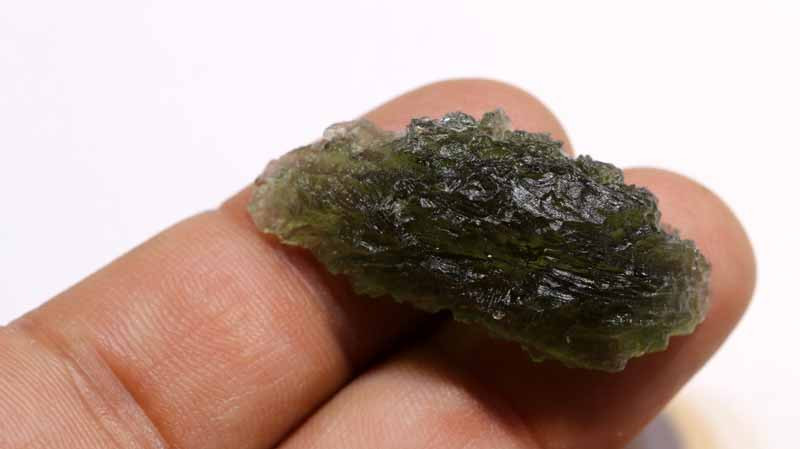
Moldavite Healing Properties
By nature of their coloring and formation, all gemstones can be used as healing stones. In the crystal healing community, moldavite is one of the most sought-after healing gems for its high-energy vibrations and transformative power.
Like other green gemstones, a rough moldavite healing crystal can bring rejuvenation, growth, and new beginnings. Crystal healers recommend the stone for a transformative spiritual experience.
Physical Healing
In the physical realm, moldavite is said to be highly rejuvenating, reducing the effect of aging on our skin and memory. Other purported properties of moldavite include targeting the causes of chronic pain, strengthening eyesight, and preventing cell damage.
Emotional Healing
Emotional benefits for moldavite may include reducing anxiety, bringing peace, and facilitating an emotional catharsis. Releasing your feelings by saying or writing them is the first step toward healing!
As the “Stone of Connectivity,” moldavite can also encourage better communication, along with improving relationships!
Chakra Healing
Chakra healing is the process of balancing your seven chakras, energy centers connected to physical, emotional, and spiritual wellbeing. The easiest method is with a chakra crystal, and moldavite is a powerful heart chakra stone.
The heart chakra governs how we love and respond to change. If your emotions feel trapped inside you, cutting you off from others emotionally, you could have a blocked heart chakra.
Using moldavite to open the chakra again can help you be vulnerable, open, and confident in your ability to handle any change-up life throws at you.
Now, to make sure you’re confident in the moldavite stone you buy, it’s best to know which properties to look for!
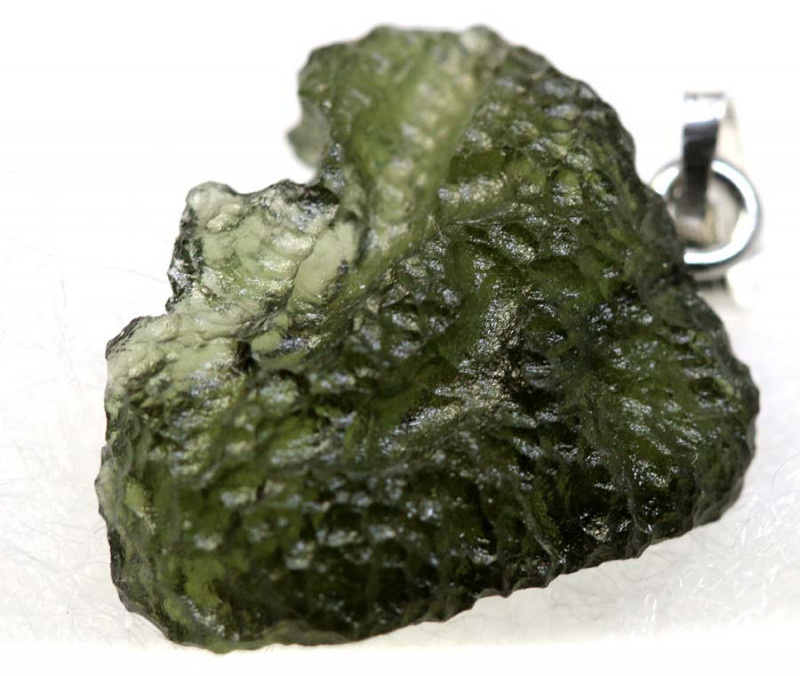
Moldavite Gemstone Properties
Gemstone experts look at a stone’s gemstone properties to determine its objective value. Given the many fakes out there, you may want to get a certified moldavite.
Certified moldavite has an authenticity certificate from a reputable organization (like International Meteorite Collectors Association) that includes its properties like size, color, cut, and special attributes.
In general, moldavite comes in two grades:
Regular grade: Has a darker, more saturated green surface covered in weathering or pitting.
High-quality (Museum grade): Has a mossy pattern and higher translucence.
Outside of grades, what is the value of moldavite determined by? Moldavite’s primary value factors are cut above all, then clarity, color, and carat weight.
Color
All moldavites are green, though the shade may range in saturation and the hue can have hints of yellow or brown undertones. The cause of moldavite’s color is a low amount of iron. The highest-valued coloring is uniformly vivid, and pale to medium in saturation with no brown undertones.
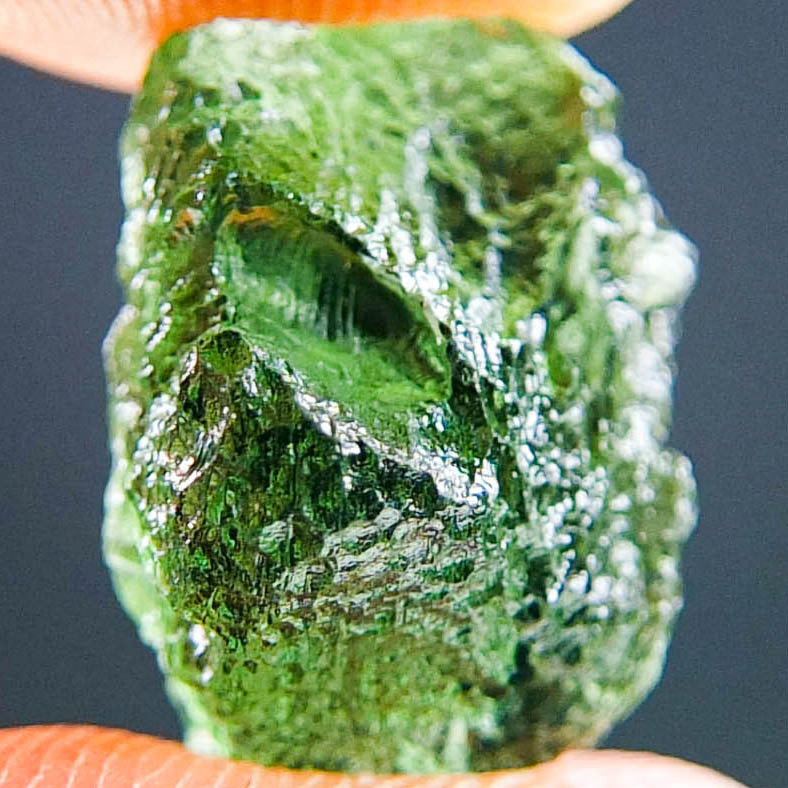
Clarity & Luster
Clarity is the amount and visibility of inclusions in a gemstone. Common inclusions in moldavite include:
Lechatelierite: A natural silica glass formed from fused quartz grains at meteorite impact sites, seen as sharp, wire-shaped peaks or worm-like inclusions.
Flow Structures: Chaotic streaks or swirls indicating the rapid speed and rotation moldavite made falling back to Earth as its melted material solidified.
Gas Bubbles: Spherical, oblong, or lens-like bubbles trapped during formation and a good indicator of real moldavite.
Moldavite’s clarity has a huge impact on its cut, and therefore its value. The most common inclusion, gas bubbles, can easily breach the surface during faceting, which can lower the value.
Luster describes a stone’s transparency level. The best luster for moldavite is transparent, which is incredibly rare. As most moldavites are opaque, any level of translucence will raise its value.
Cut
The cut is the most important factor to moldavite’s value, though raw moldavites are quite valuable. Lapidaries may choose faceted cuts or un-faceted cuts like cabochons or beads.
Common faceted cuts are round or emerald to accentuate moldavite’s color. Unlike most gems, faceted moldavite will show rougher facets.
Often, moldavite rough specimens aren't cut at all! The crystal-like shapes offer unique appeal in moldavite rings, especially “flower burst” patterns. Rough material may also be carved into discs, figurines, or other whimsical shapes. Plus, raw moldavite may show natural drop, oval, or spiral shapes, to name a few!
Carat Weight
Carat weight plays a small role in moldavite’s value, only when all other factors are equal. Most moldavite sold is 1-19 cts, with the average being 3-4 cts.
One of the largest known moldavite specimens, “Slavic Moldavite,” weighed 1,327.5 cts (265.5 g) and was discovered in 1971 in Moravia — which takes us right into the stone’s history!

Moldavite History
Moldavite began 14-15 million years ago, the time geologists theorize a meteorite struck present-day Nördlinger Ries, Germany.
Archeological evidence shows that early Paleolithic humans used and traded moldavite, creating tools, weapons, and amulets (like those found with the Venus of Willendorf statue).
Venus of Willendorf, one of the oldest known statues of a goddess believed to date back 25,000 years, was uncovered in 1908 surrounded by moldavite necklaces!
In the Middle Ages, the stone was so revered, only royals or nobles could wear moldavite jewelry.
The first official moldavite discovery happened in 1787 when Josef Mayer found moldavite at Bohemia’s Vltava River. Thinking it was chrysolite, Mayer presented it to the Bohemian Scientific Society as such.
Moldavite’s name came in 1836, chosen by museum curator F.X.M. Zippe.
However, the stone’s true origins weren’t revealed until 1900, when F.E. Suess identified its unearthly but meteorite-like surface pitting. While Suess believed moldavite was a type of meteorite, his analysis eventually led scientists to the theorized formation process we know today.
Throughout the 1900s, the stone made notable appearances, including a moldavite necklace given to Queen Elizabeth II by the Swiss government.
Before it embarked on this fascinating history, how did moldavite form? The answer is out of this world!
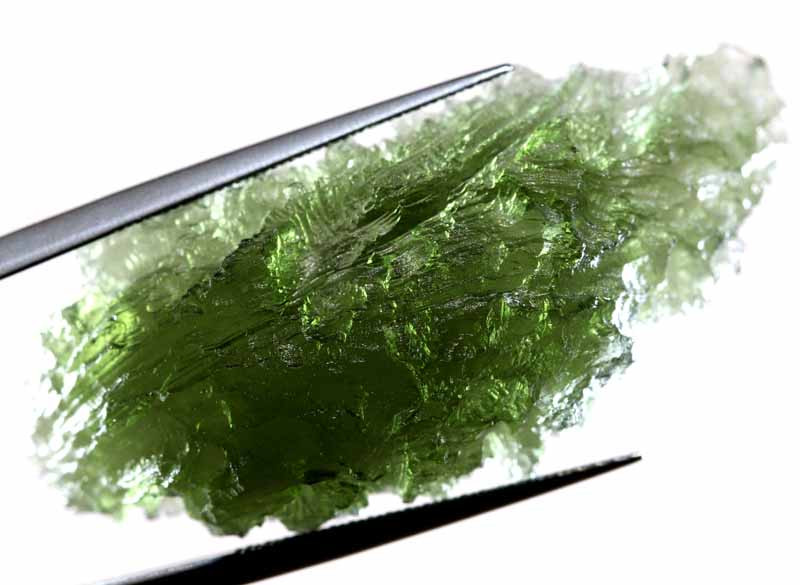
Moldavite Origins & Sources
Moldavite formed when a meteorite crashed into Earth and sent molten material flying into the atmosphere. What goes up must come down, and that material came swirling and transforming into new shapes before landing back on Earth, scattered across strewn fields.
Chemically, when the meteorite crashed, the pre-moldavite material vaporized, condensed into liquid, and then solidified into glass — much quicker than the years or centuries of other gems!
You can’t get moldavite just anywhere, though. So, what country is moldavite from?
Mining Locations
Though the meteorite fell in Germany, moldavite scattered across the Czech Republic, the only producer of true moldavite.
In the Czech Republic, there are two primary moldavite locations: Bohemia and Moravia. Bohemia has 99 percent of moldavites and the only gem-quality specimens. The remaining 1 percent, often brownish-green and more spherical, come from Moravia and nearby Austria and Germany.
While shopping, you may wonder: Why is moldavite so expensive now? Its limited supply means prices will likely only increase, making it a good investment!
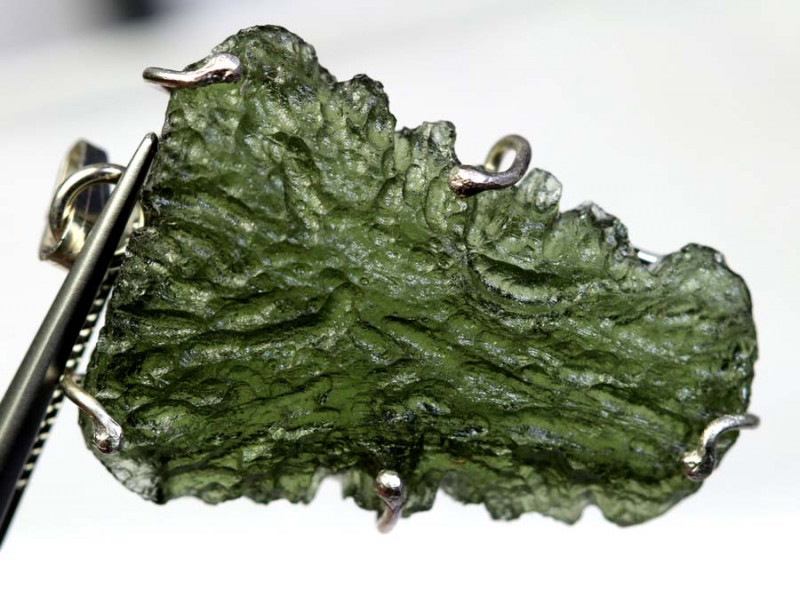
Moldavite Price & Value
For its rarity, moldavite is actually relatively inexpensive. So, how much is moldavite per gram? It depends on quality, especially cut.
Regular-grade raw moldavite is usually $15-$25 per gram ($3-$5 per carat) but can be $30 per gram ($6 per carat) with an uncracked surface.
Museum-grade moldavite, regardless of size, can be anywhere from $300 to hundreds of thousands. Rough moldavite specimens around 20 cts with good color are usually $100-$300 each.
Low-quality moldavite price per carat (under 20 cts) is typically $8-$15 per carat. However, one moldavite bead can be $60-$80, making a strand roughly $1,200-$1,400.
Moldavite Care and Maintenance
Moldavite’s wearability is poor, so we recommend buying moldavite jewelry with protective settings. To prevent hard blows, necklaces and earrings are a safer bet than a moldavite ring.
Is moldavite waterproof? Yes, moldavites can get wet!
Clean moldavite carefully with a soft brush, mild soap, and lukewarm water, then dry it with a microfiber cloth. Avoid ultrasonic/steam cleaners, harsh chemicals, or heat.
Store your moldavite wrapped in cloth in a soft box, away from other gems. The box should be opaque, dry, and away from sunlight.
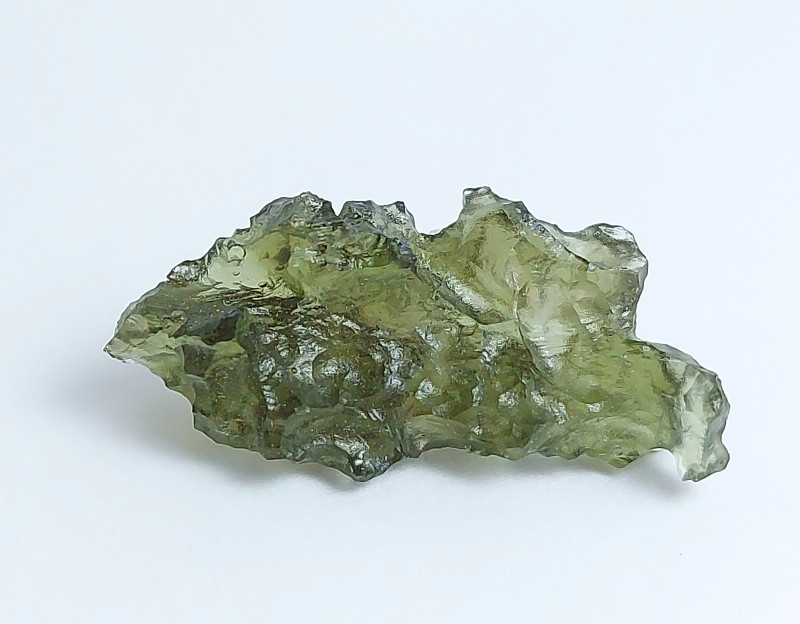
Break the Mold with Moldavite!
By now, you’ve learned all about moldavite gemstones. So, should you buy one? . In our opinion, the stone’s one-of-a-kind origins, appearance, and power make it a must-have in any collection! After all, how often can you say you’re wearing a gemstone that traveled to space and back?
When deciding where to buy moldavite, it’s crucial to find reputable sellers with a rigorous verification process to ensure you get the real deal.
Search the Gemstone Encyclopedia
Related Auctions
Related Articles
Originally the Birthstones or gemstones were associated with a zodiac sign or the month of a individuals birth. Find out what your stone is and view the stones we have for sale
8th Feb 2021
There are dozens of quartz and chalcedony gems with various colors and patterns. Learn all about quartz properties and every type of quartz, from amethyst and agate to plasma and phantom quartz!
15th Oct 2020
Hackmanite is a pink to violet sodalite gem known for its unique color-change and luminescence. Learn why hackmanite is special, from its rare qualities to the types of hackmanite jewelry available.
28th Mar 2018
Latest Articles
Tantalite is a group of red, brown, or black minerals containing the rare and valuable element tantalum. Discover the uses, history, prices, and properties of tantalite gemstones in this guide!
11th Nov 2024
Hodgkinsonite is a very rare collector’s gemstone known for its vibrant pink or purple hues, only found in New Jersey, USA. Learn hodgkinsonite’s prices, history, properties, and traits in this guide!
9th Jun 2024
Canasite is a rare mineral usually found as greenish-yellow inclusions in charoite but also known as a purple gemstone. Learn canasite’s history, varieties, properties, and prices in this guide.
27th May 2024
Article Categories
How To's is where you will find helpful articles from gem Rock Auctions on how to cut gemstones, select gemstones and buy gemstones.
9 Articles





